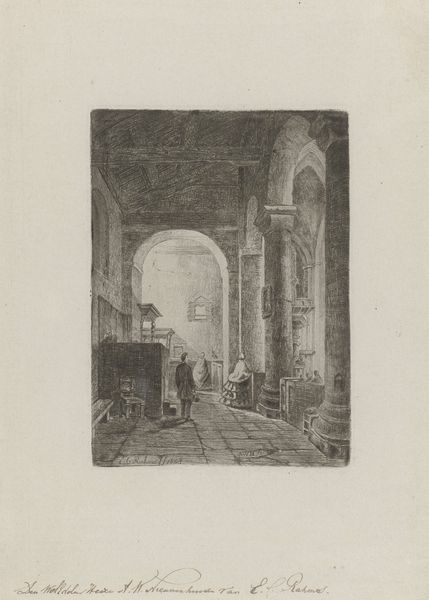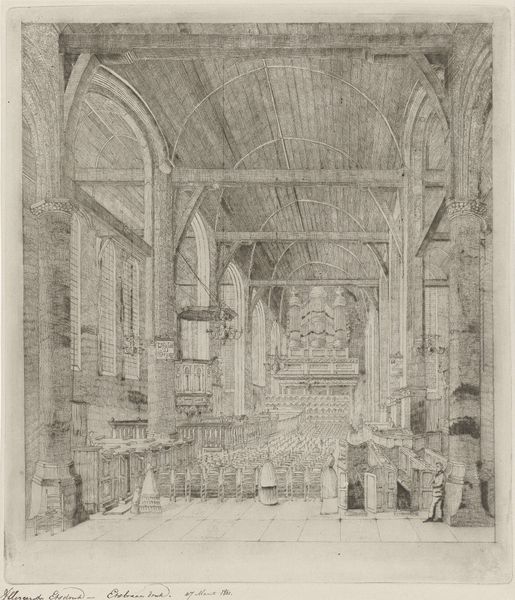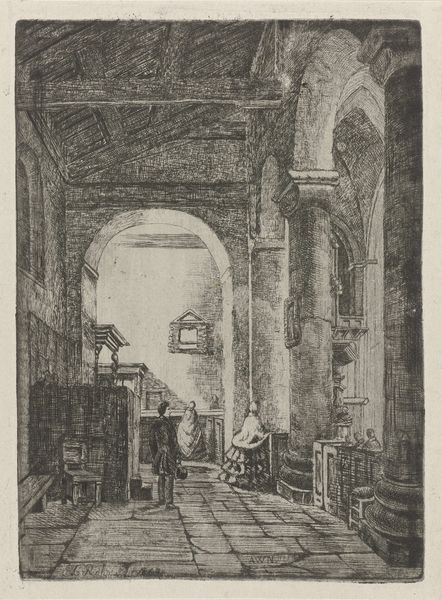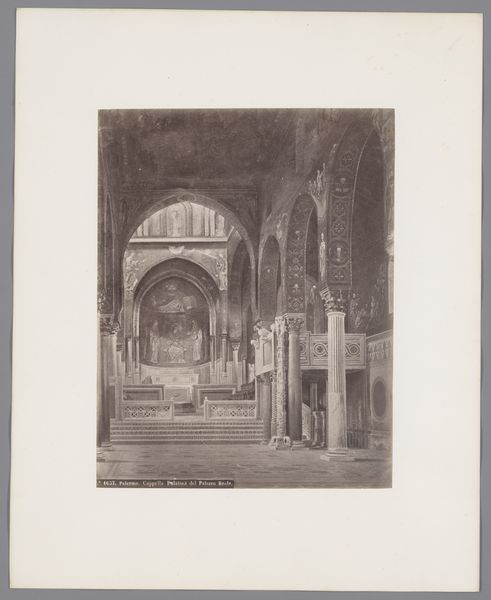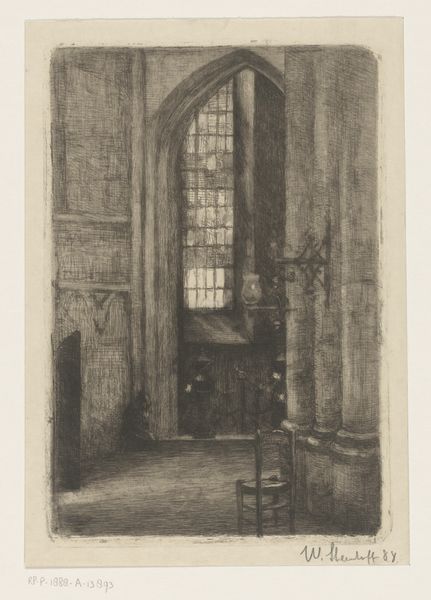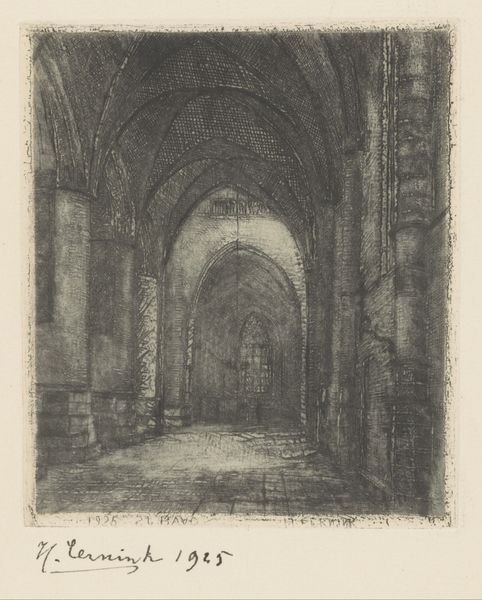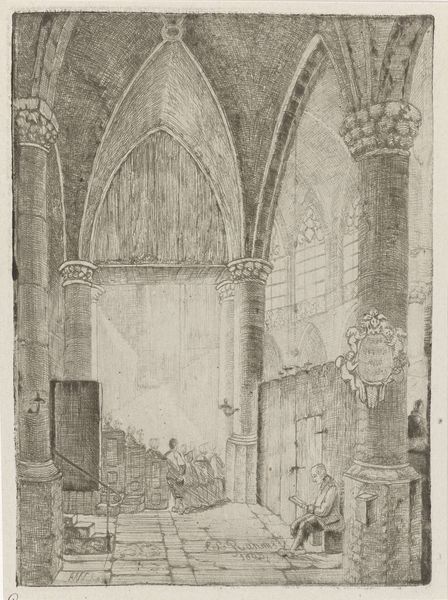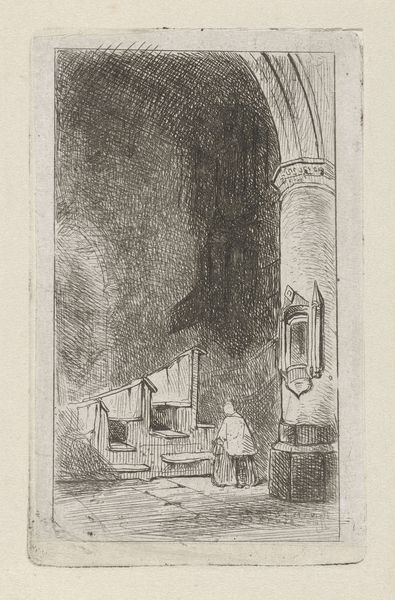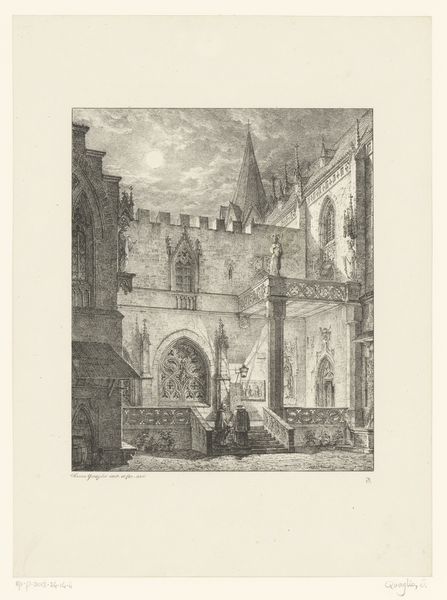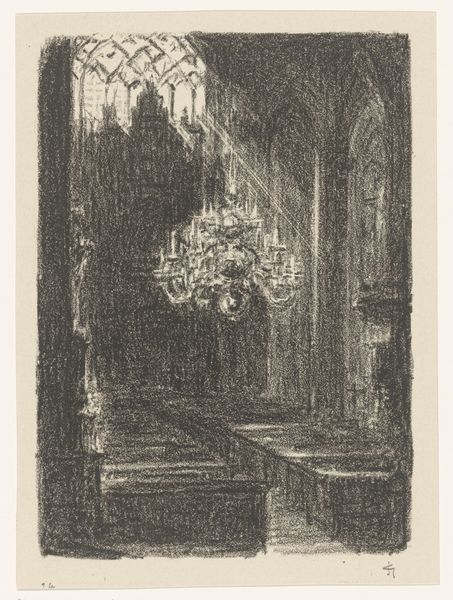
Dimensions: height 128 mm, width 96 mm
Copyright: Rijks Museum: Open Domain
Curator: This print, dating roughly from 1846 to 1913, is called "Kerkinterieur" which translates to Church Interior. It’s attributed to Reinier Evert Johannes Roeterink, and we believe it's an etching or engraving, possibly with ink. Editor: Wow, my first impression is that it feels quiet. Eerily so. It's like the sound just got sucked out of this old church. Very gothic. The cross-hatching gives it an unsettling texture. Curator: The technique certainly speaks to its time, a period grappling with rapid industrialization and secularization. Notice the perspective, how the artist guides your eye toward the vanishing point just behind the figure near the door. Churches at this time were losing significance and this piece may reflect anxiety toward such loss. Editor: True, the figure does seem small and alone in such a grand space. But, beyond the history, I feel like this is a piece about shadows. About secrets whispering within those stone walls. What stories does the building hold? Curator: Exactly. Church interiors became a popular genre precisely because of these shifting social and religious attitudes. They offered a nostalgic glimpse into a past of reverence, a pictorial tradition that gained considerable momentum from Romanticism. Think about the role of art and the cultural function the piece served, reminding people what life once was. Editor: And there’s a timeless quality too. Like it could be anywhere. The light filters in creating patterns. You want to imagine organ music or a solitary prayer— the image prompts introspection and the enduring human connection to something bigger than themselves. You want to almost write into existence all those moments within this church, whether happy or solemn. Curator: Right. By depicting a church interior in this style, Roeterink is also participating in constructing our understanding of this moment, highlighting particular feelings while minimizing the impact of social reform. In an institution facing increasing public debate and controversy, that makes this print particularly charged. Editor: Maybe, but for me, it goes beyond all that! There's mystery, and a profound invitation for stillness. Ultimately, an artist asks the viewer to just...be there. Roeterink has done something beautiful with such simple means. Curator: I suppose that's the lasting power of art, to resonate personally despite the tides of time and sociopolitical changes. Editor: Exactly. Which is pretty good for something made of ink, wouldn’t you agree?
Comments
No comments
Be the first to comment and join the conversation on the ultimate creative platform.
